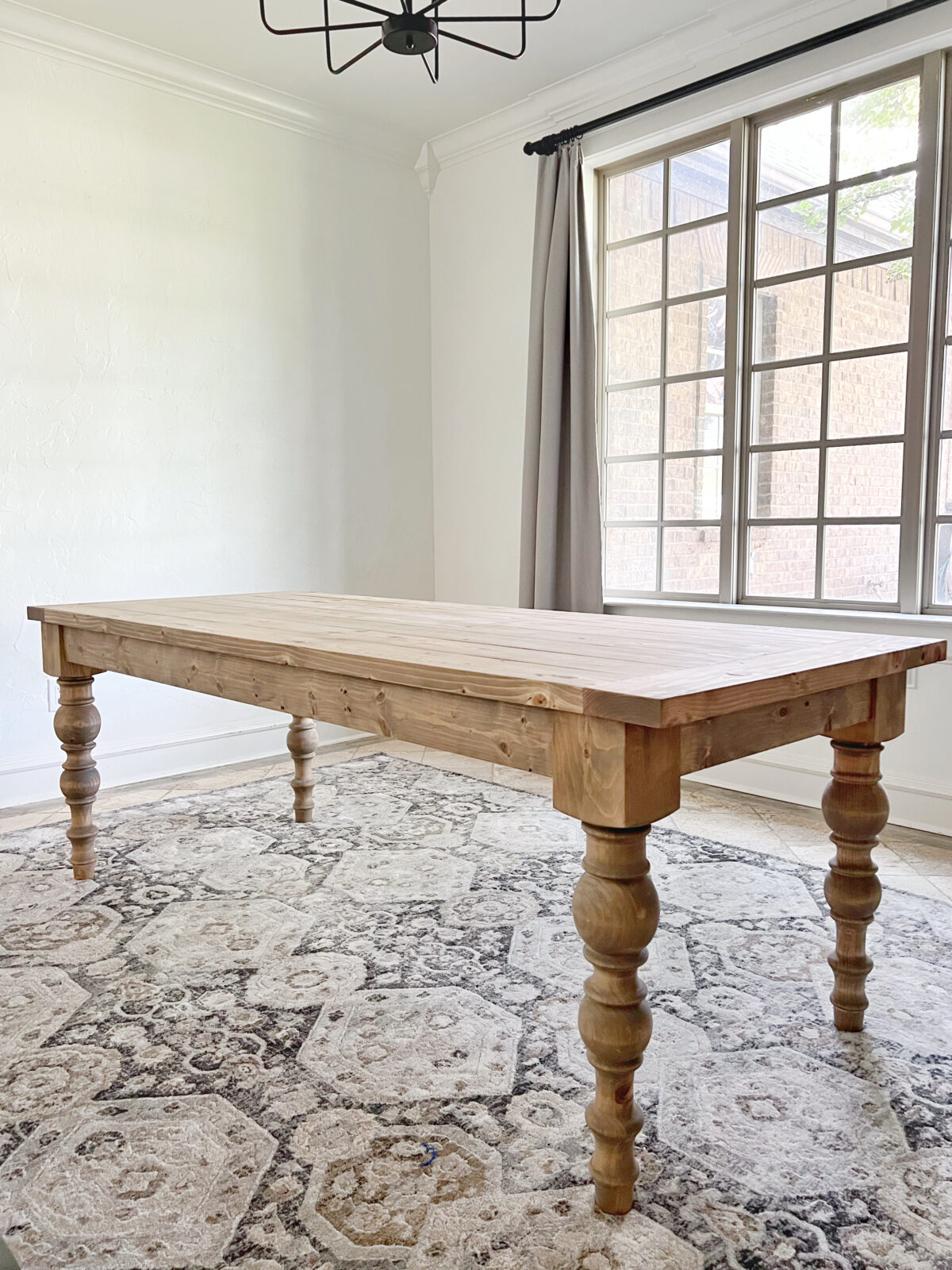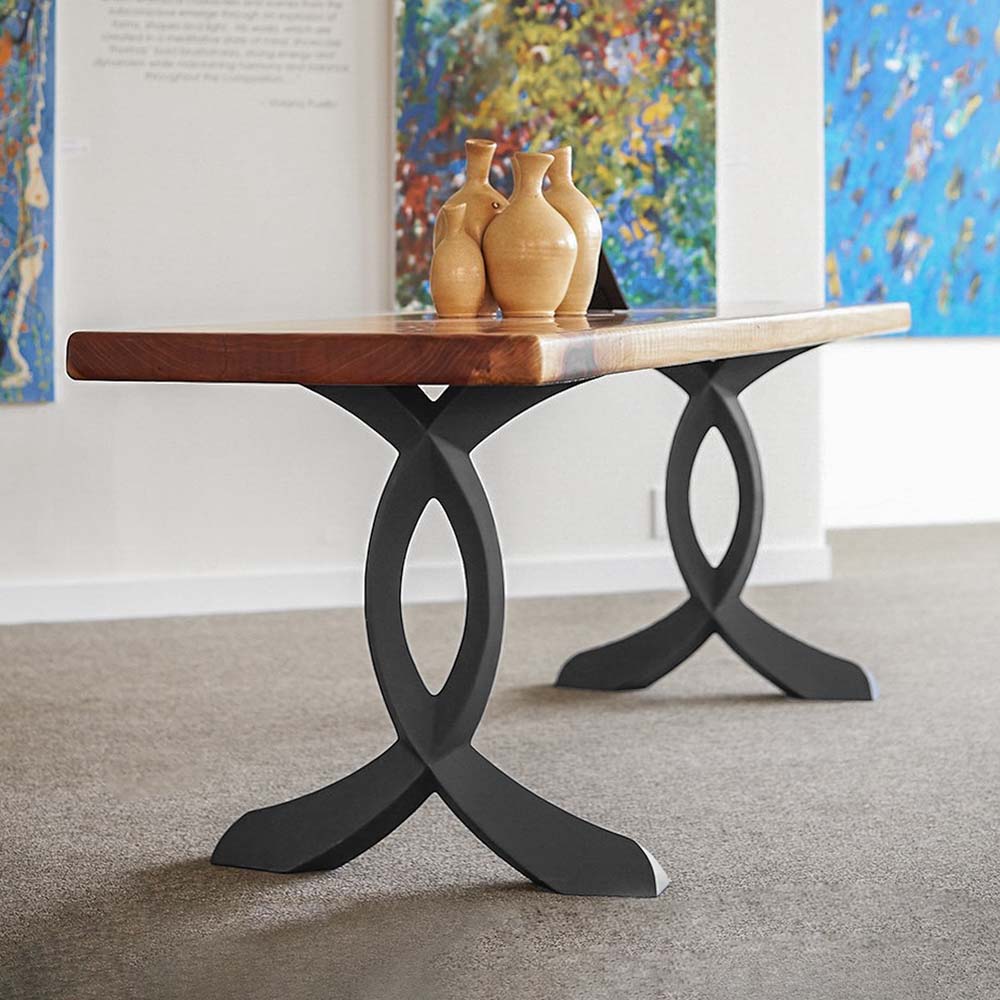Customized Dining Room Table Legs: A Stylish Addition to Any Home
Customized Dining Room Table Legs: A Stylish Addition to Any Home
Blog Article
Picking the Perfect Table: What Styles Job Best for Your Home?
Selecting the optimal eating table for your home can be a nuanced procedure that balances aesthetic appeals and capability. To browse these choices efficiently and discover a table that absolutely complements your home, consider the complying with elements in information.
Assessing Your Area
Reviewing the measurements and layout of your dining area is a critical primary step in choosing the best eating table. Begin by determining the size and size of the area, making up entrances, windows, and other architectural functions that might influence table placement. This guarantees that your table not only fits yet likewise enables comfy movement around it.
Take into consideration the variety of individuals you commonly delight. A table must accommodate your house's day-to-day demands while using adequate flexibility for occasional guests. As a regulation of thumb, designate a minimum of 24 inches of table width each to ensure a comfy eating experience.
It's additionally necessary to keep proper clearance around the table. Preferably, there ought to go to least 36 inches between the table side and wall surfaces or various other furnishings, making it possible for very easy accessibility and motion. For areas where chairs with arms or additional storage space systems like buffets are involved, boosting this clearance to 48 inches is a good idea.
Illumination and atmosphere play substantial functions as well. Make certain that your eating table aligns with existing lights fixtures or prepare for appropriate lighting remedies. This extensive spatial assessment warranties that your table not just fits physically yet likewise integrates with your space's overall capability and aesthetic.
Popular Table Styles

Traditional eating tables often include luxuriant details, rounded legs, and rich timber coatings, stimulating a sense of timeless elegance. They are best for homes with traditional decoration or those seeking to add a touch of elegance to their eating location.
Modern dining tables prioritize simpleness and clean lines, usually integrating products like glass and steel. These tables are excellent for modern areas, providing a smooth and clean look that enhances minimalist design ideologies.
Rustic table, on the other hand, stress natural materials and a handcrafted look - dining room table legs. They typically feature redeemed wood and a troubled surface, creating a cozy and inviting ambience. These tables work well in farmhouse-style homes or those looking for a relaxing, organic feeling
Industrial dining tables integrate resources such as steel and wood, often showcasing a practical aesthetic. This style is well-suited for lofts or city areas, including a touch of tough appeal and resilience to the eating experience.
Each design uses unique benefits, making it necessary to select one that straightens with your home's overall layout and your personal choices.
Product Choices
When selecting a table, the choice of material plays a crucial function in determining both the table's looks and functionality. Wood, steel, glass, and composite products each offer distinct advantages and challenges, making it imperative to line up the product with your home's style and lifestyle needs.
Timber is a timeless and flexible alternative, available in varieties such as oak, walnut, and mahogany. Understood for its longevity and heat, wood complements both standard and modern insides. It calls for normal upkeep to prevent scratches and warping.
Metal tables, typically crafted from stainless-steel, light weight aluminum, or functioned iron, are praised for their contemporary charm and toughness. They are especially fit for commercial or great post to read minimal setups however can be susceptible to damages and might really feel cold to the touch.
Glass dining tables bring an air of sophistication and visibility, perfect for smaller areas as they produce an illusion of more room. While very easy to clean, glass can be susceptible to spots and requires careful taking care of to avoid chips and splits.
Composite products, such as MDF and plywood, deal economical and adjustable services, though they might lack the long life of all-natural materials. Selecting the right material guarantees your eating table is both a useful property and an aesthetic pleasure.
Shape and Size Factors To Consider
After establishing the proper material for your table, the dining room table legs following factor to consider is choosing the right sizes and shape to suit your room. The shape of the table substantially influences the area's aesthetic and functionality. Rectangle-shaped tables, the most common form, are optimal for larger rooms and can fit a higher variety of guests. go to this site They additionally permit a more official dining experience. Alternatively, round tables foster a feeling of intimacy and are superb for smaller eating areas, urging conversation by removing corners and making every person feel just as included.
Size is similarly crucial and must be determined by both the room's dimensions and the variety of individuals you intend to seat on a regular basis. Generally of thumb, designate at the very least 24 inches of table size each to guarantee comfy eating. Additionally, consider the table's clearance area: there must go to the very least 36 inches between the table edge and the walls or other furnishings. This makes certain that diners can walk around quickly without really feeling confined. Expanding tables offer flexibility if you frequently hold bigger gatherings, offering extra seating when needed without inhabiting additional area daily. Picking the appropriate sizes and shape makes certain both functionality and visual consistency in your dining area.
Matching Your Design
Picking a table that harmonizes with your existing decoration is critical in creating a natural and inviting room. Begin by examining your current interior decoration style, whether it be contemporary, typical, rustic, or eclectic. The table must complement the total aesthetic, not take on it. For example, a streamlined, minimal table with clean lines is perfect for a modern-day home, while a vintage, ornate table matches a much more conventional setup.
Shade and material are similarly considerable. If your decor features cozy tones and all-natural materials, think about a wood table to boost the organic feel. Conversely, a glass or metal table might be better suited in an area controlled by cool colors and industrial aspects. Take note of the finish, as it ought to mirror various other furnishings and components to keep consistency.
Texture plays a crucial function as well. A rough-hewn, redeemed timber table can include personality to a rustic space, while a sleek marble surface area can elevate a luxurious dining location. Finally, consider the range and proportion of the table in connection with the area size and existing furnishings. A well-matched eating table not just improves aesthetic appeal yet also enriches the overall dining experience.

Final Thought
Selecting the optimal eating table requires mindful factor to consider of space, style, materials, shape, and dimension (dining room table legs). Traditional tables complement timeless interiors with abundant timber finishes, while modern tables fit modern setups through glass and steel. Rustic layouts present warmth through all-natural materials, and industrial designs boost city atmospheres with raw aspects. Harmonizing the table with existing design makes sure both capability and visual appeal, adding to a natural and visually pleasing dining area.
Report this page